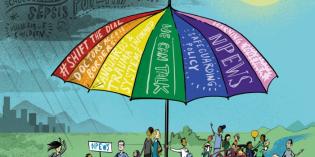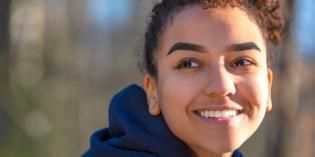You can download the information leaflets below
First seizures are a complex area in which to provide useful health information. There are many different diagnoses to consider and often there is much concern and uncertainty. It is easy to provide insufficient or confusing information, and it is also easy to miss opportunities to provide key safety advice, details regarding local pathways or signposting information.
I don't think you ever get used to seeing a child having an epileptic seizure. Whether it is subtle or dramatic, there is something about a seizure that is always distressing. What makes it even more difficult is when it is your child, you are not completely sure what it was, why it happened and when and whether it will happen again. It is easy for families and professionals to give vague, incomplete information, to over-react or under-react.
Background
In 2019 a multi-professional working group led the development of a safety-netting information leaflet for parents or carers of children and young people who have had a first seizure that was not considered to be a ‘febrile convulsion’. This was followed by the development of a child and young person friendly information leaflet, to help them understand what is happening and to provide useful information for them to pass on to teachers, friends and family members.
Led by Dr Colin Dunkley (RCPCH Epilepsy12 audit clinical lead / Consultant Paediatrician), the working group comprised representation from several Royal Colleges and Associations, including:
- Jayne Wheway - Patient Safety Expert Advisor for Children and Young People and Patient Safety Concerns (NHS Improvement)
- Dr Rachel Rowlands - Paediatric Emergency Consultant
- Dr Maria Moran - Consultant Paediatrician
- Dr Katerina Vraka - Paediatric Registrar
- Rachael Wheway - Children’s Epilepsy Nurse Specialist
- Dr Carole Buckley - General practitioner (retired) / Royal College of General Practitioners representative
- Dr Paul Wright - Consultant Developmental Paediatrician / British Association for Community Child Health representative
- Dr Michelle Jacobs - Consultant in Emergency/Paediatric Emergency Medicine / Royal College of Emergency Medicine representative
- Sara Haveron - RCPCH Quality Improvement Team
The information leaflets are intended for UK use or for adaption locally to all involved in the regulation or practice of the care of children and young people who have had a first seizure.
About the leaflets
Designed with emergency departments, general practice and initial paediatric services in mind, these leaflets are for parents and carers of children and young people after they have been initially assessed after a first afebrile seizure, as well as children and young people themselves.
In both leaflets there is a useful tear-off ‘Information Provision Checklist for Healthcare Providers’ at the back for the healthcare provider to print/save and retain in patient records.
Information for parents and carers
The leaflet for parents and carers is designed to be appropriate whether the seizures are single or recurrent, epileptic, non-epileptic or uncertain and whether associated with other problems and provides information in the gap between initial assessment and first specialist paediatric assessment. It is for parents and carers to have correct early information around what to do following a first seizure, until the first assessment with a specialist, as well as to ensure initial patient journeys are appropriately described and improved.
As well as describing the first aid steps for helping a child who has had/is having a convulsive seizure, the leaflet covers key questions a parent or carer may have, such as: ‘Do I need to do anything differently after this first seizure?’, ‘What will happen next?’, ‘What can I do in the meantime?’ and ‘Where can I find other information?’.
The leaflet is endorsed by the British Association for Community Child Health, British Paediatric Neurology Association, Royal College of General Practitioners, Royal College of Emergency Medicine, Epilepsy Action and Young Epilepsy.
Information for children and young people
This accompanying information leaflet is aimed at children and young people who have had a first seizure. The leaflet has been developed with the Epilepsy12 Youth Advocates to ensure it reaches out to the correct audience.
Describing the first aid steps for helping someone who has had/is having a convulsive seizure is important, and this leaflet covers key questions someone may have, such as ‘What should I tell others?’ and ‘Do I need to do anything differently after this first seizure?’.
The leaflet also has a helpful section for the user to add notes to, including personal information such as details of next of kin and whether there is an emergency care plan in place.
This leaflet is designed for either a child or young person, or for a school teacher, friend or family member to have as an accompaniment to the parent and carer leaflet.
The leaflet is endorsed by the British Association for Community Child Health, Royal College of General Practitioners, Royal College of Emergency Medicine, Epilepsy Action and Young Epilepsy.
Raising awareness
Join the conversation on Twitter with #firstseizure to improve child health and seizure awareness.











